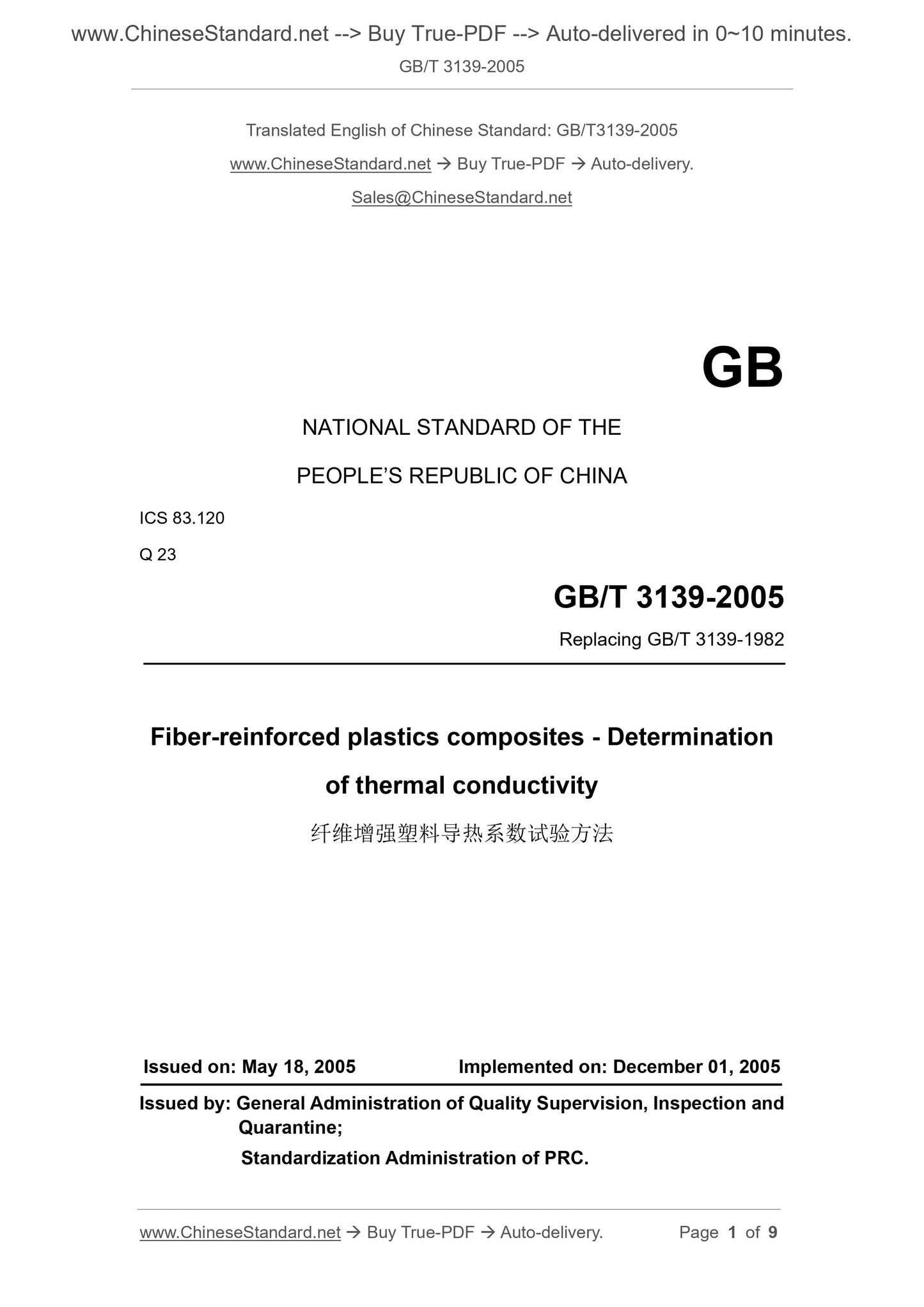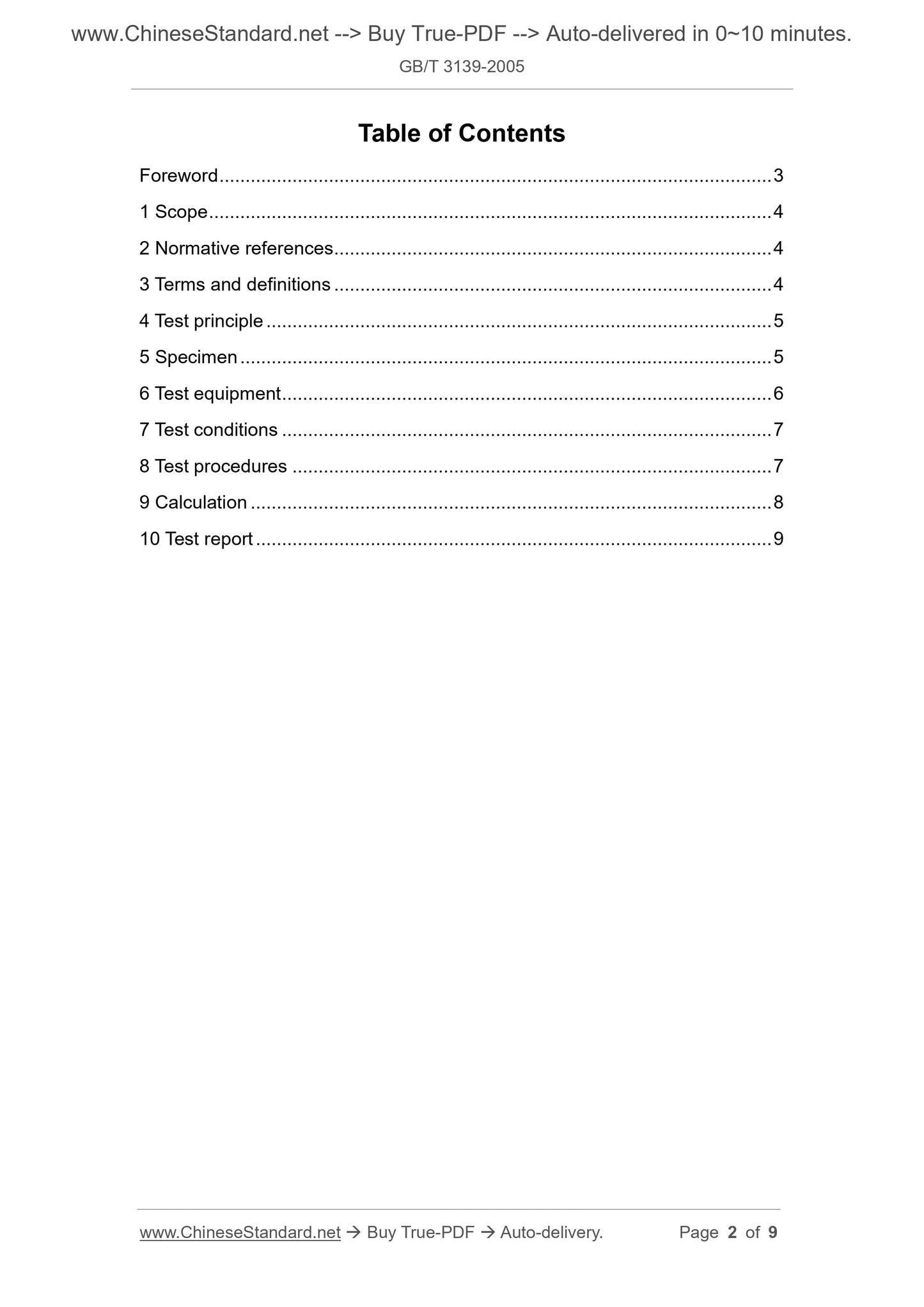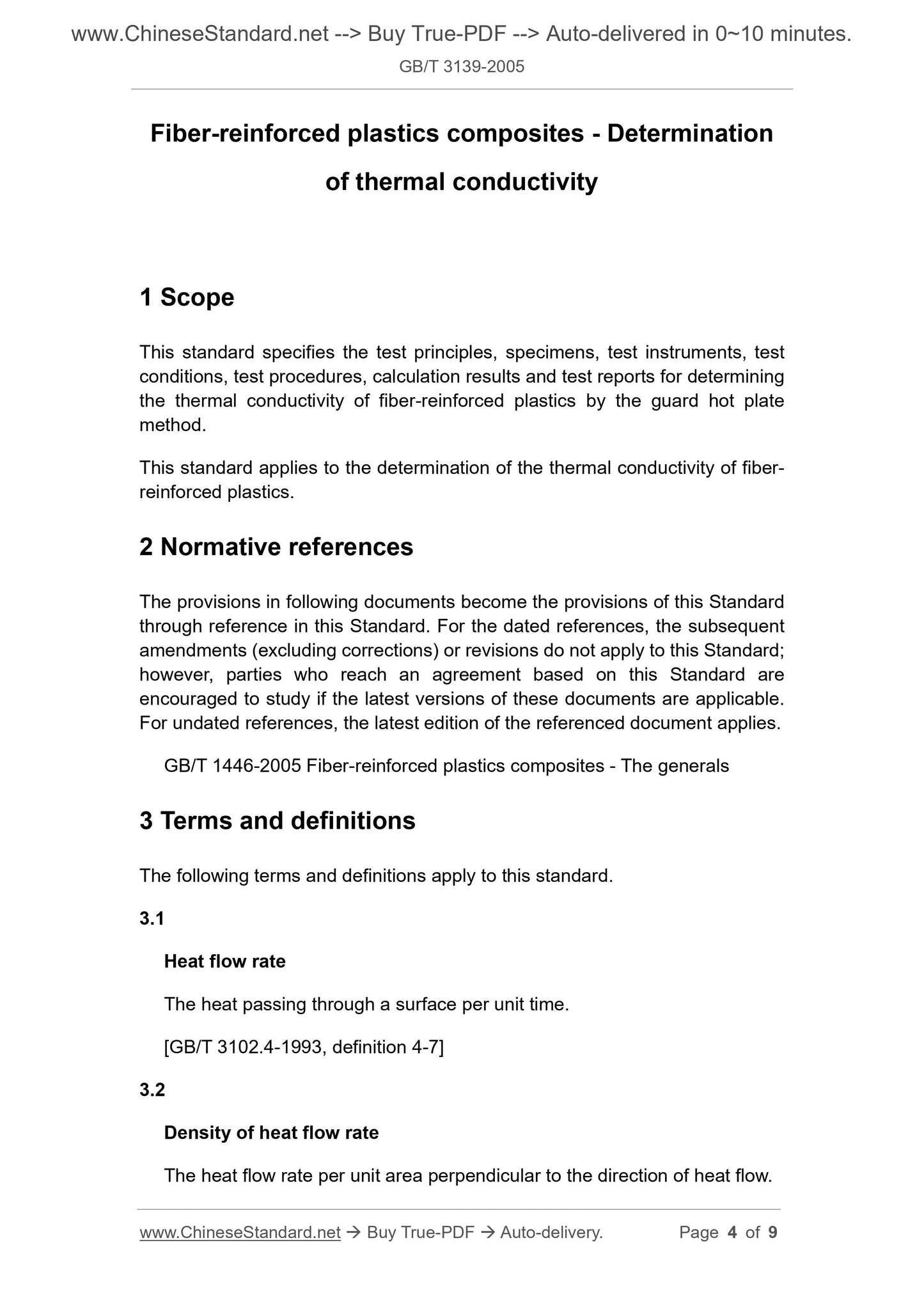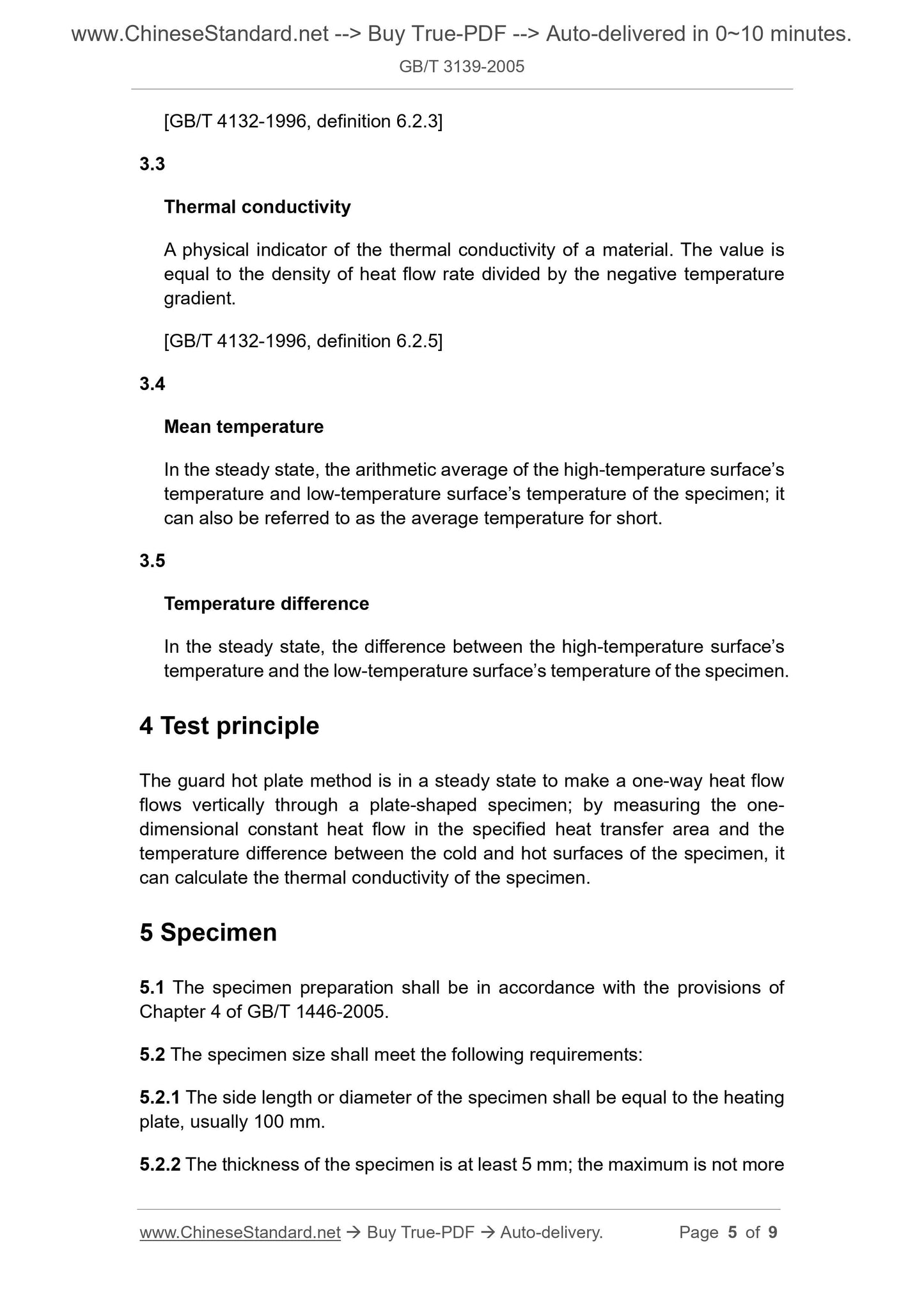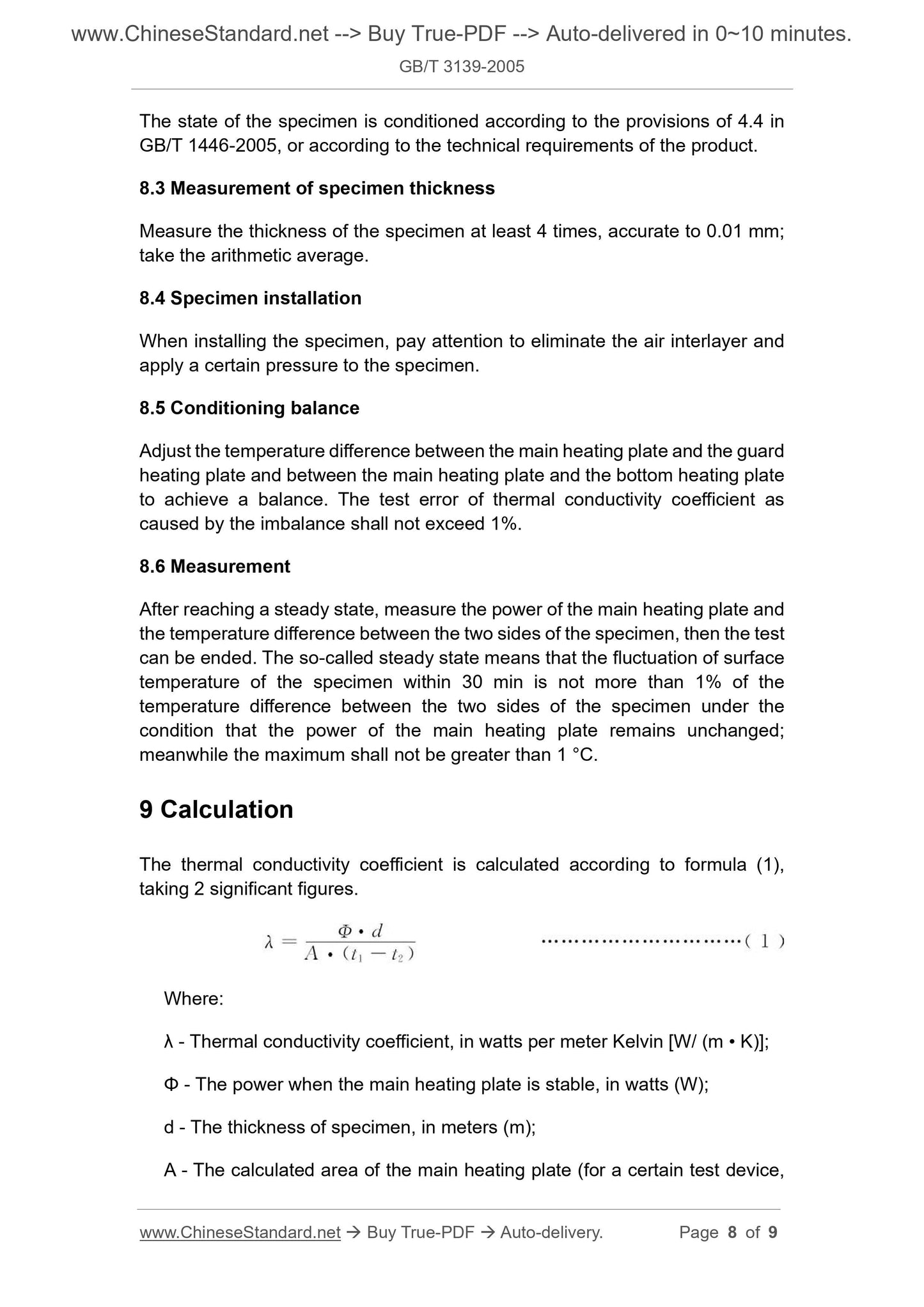1
/
of
5
www.ChineseStandard.us -- Field Test Asia Pte. Ltd.
GB/T 3139-2005 English PDF (GB/T3139-2005)
GB/T 3139-2005 English PDF (GB/T3139-2005)
Regular price
$115.00
Regular price
Sale price
$115.00
Unit price
/
per
Shipping calculated at checkout.
Couldn't load pickup availability
GB/T 3139-2005: Fiber-reinforced plastics composites -- Determination of thermal conductivity
Delivery: 9 seconds. Download (and Email) true-PDF + Invoice.Get Quotation: Click GB/T 3139-2005 (Self-service in 1-minute)
Newer / historical versions: GB/T 3139-2005
Preview True-PDF
Scope
This standard specifies the test principles, specimens, test instruments, testconditions, test procedures, calculation results and test reports for determining
the thermal conductivity of fiber-reinforced plastics by the guard hot plate
method.
This standard applies to the determination of the thermal conductivity of fiber-
reinforced plastics.
Basic Data
| Standard ID | GB/T 3139-2005 (GB/T3139-2005) |
| Description (Translated English) | Fiber-reinforced plastics composites. Determination of thermal conductivity |
| Sector / Industry | National Standard (Recommended) |
| Classification of Chinese Standard | Q23 |
| Classification of International Standard | 83.120 |
| Word Count Estimation | 6,651 |
| Date of Issue | 2005-05-18 |
| Date of Implementation | 2005-12-01 |
| Older Standard (superseded by this standard) | GB/T 3139-1982 |
| Regulation (derived from) | Announcement of Newly Approved National Standards No. 8 of 2005 (No. 82 overall) |
| Issuing agency(ies) | General Administration of Quality Supervision, Inspection and Quarantine of the People Republic of China, China National Standardization Administration Committee |
| Summary | This standard specifies: Guarded hot plate method for the determination of fiber reinforced plastic thermal conductivity test principle, sample, test equipment, test conditions, test procedures, calculations and test reports. This standard applies to: Determination of fiber-reinforced plastics Thermal conductivity. |
Share
